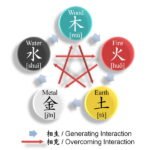The End of the Korean War: A Historical Overview
The Korean War, which began in 1950, was a significant conflict that arose from the geopolitical tensions following World War II. The war pitted North Korea, backed by the Soviet Union and China, against South Korea, supported by the United States and other United Nations member states. The culmination of this tumultuous period occurred with the signing of the Armistice Agreement on July 27, 1953, effectively bringing an end to active hostilities.
Key battles, such as the Battle of Inchon and the Chosin Reservoir, were crucial in determining the course of the war. The Battle of Inchon, launched by General Douglas MacArthur in September 1950, was a decisive surprise amphibious invasion that turned the tide in favor of the United Nations forces. However, the war’s dynamics shifted drastically with the entry of Chinese troops in late 1950, resulting in a prolonged stalemate along the 38th parallel.
The involvement of foreign powers was pivotal in shaping the conflict. The United States aimed to contain the spread of communism in Asia, while the Soviet Union provided material support to North Korea. As negotiations for a ceasefire began, the political landscape became increasingly complicated due to differing objectives among the parties involved, including the mutual interests of South Korea and the United States in ensuring a non-communist regime was sustained in the South.
The war led to significant consequences for the Korean peninsula. The immediate aftermath saw the establishment of the Demilitarized Zone (DMZ), a buffer zone that still exists today. The partition of Korea into the communist North and the capitalist South fostered two distinct political ideologies, further entrenching the division and setting the stage for decades of tension. The long-term impacts include a legacy of military readiness on both sides and ongoing diplomatic challenges, elements that continue to define the Korean geopolitical landscape to this day.
The Birth of an Economic Miracle
South Korea’s remarkable transformation from a war-torn nation to one of the world’s leading economies is often referred to as the ‘Miracle on the Han River.’ Following the devastation of the Korean War in the 1950s, South Korea faced immense challenges, including widespread poverty and a lack of infrastructure. However, through a series of strategic initiatives, the government began to lay the groundwork for rapid economic development.
A pivotal aspect of this transformation was the government’s adoption of export-oriented development policies. By actively promoting exports, South Korea sought to integrate itself into the global economy. This approach was marked by the establishment of industrial complexes and the creation of the necessary infrastructure to facilitate trade. Key industries such as textiles, electronics, and automobiles were prioritized, which not only stimulated job creation but also positioned South Korea as a competitive player on the international stage.
The state played an instrumental role in orchestrating this economic growth. Under the leadership of figures such as President Park Chung-hee, the government implemented targeted policies that encouraged industrialization. This included directing financial resources towards strategic sectors, as well as fostering collaborations between the government and private enterprises. Such partnerships were essential in mobilizing domestic resources while attracting foreign investment.
Moreover, foreign aid, particularly from the United States, significantly contributed to the early stages of South Korea’s economic revival. The U.S. provided essential financial assistance through programs like the Korean Economic Assistance Program, which helped rebuild infrastructure and stabilizing the economy. This support enabled South Korea to focus on its developmental goals, ultimately laying the foundation for sustained economic growth.
As a result of these comprehensive initiatives and systemic reforms, South Korea evolved into an economic powerhouse, characterized by rapid industrialization and export-led growth. This transformative period not only reshaped its economy but also paved the way for improved living standards for its population, marking the beginning of an extraordinary economic miracle.
The Cold War Context: Global Tensions and Their Impact on Korea
The Cold War, manifesting from the end of World War II, created a polarized world characterized by competing ideologies: communism and capitalism. This ideological struggle significantly influenced global geopolitics, particularly in Korea, where emerging tensions between the United States and the Soviet Union culminated in the division of the Korean Peninsula into two distinct states in 1945. The northern region fell under the influence of the Soviet Union, adopting a communist regime, while the southern portion aligned with the United States, establishing a capitalist government. This division would lay the groundwork for the Korean War, which erupted in 1950, initiating a profound conflict fueled not merely by local disputes but also by broader Cold War dynamics.
The involvement of superpowers in the Korean conflict exemplified the larger geopolitical strategies at play during this era. The United States viewed the containment of communism as essential, deploying military forces to support South Korea, mirroring its efforts in other regions impacted by the spread of communism. Conversely, the Soviet Union, alongside communist China, provided support to North Korea, signaling a commitment to extending communist ideologies. This intervention reinforced the extension of Cold War rivalries onto the Korean Peninsula, with devastating consequences for the Korean populace and landscape.
The ideological battle between communism and capitalism not only affected military engagements but also shaped domestic policies in both North and South Korea. In the North, a rigid totalitarian regime emerged, prioritizing state control and promoting a narrative of anti-imperialist resistance. In contrast, South Korea, influenced by American capitalist ideals, experienced varying degrees of democratic governance, ultimately paving the way for economic transformation and development. This evolution was marked by significant challenges and adaptations as South Korea navigated the complexities of Cold War pressures and pursued its own identity amidst global struggles.
Democracy Struggles in South Korea: A Timeline of Reforms
South Korea’s journey towards democracy has been marked by significant challenges and transformative events that have shaped the nation’s political landscape. Following the end of Japanese colonial rule in 1945, South Korea was thrust into a period of military governance that limited civil liberties and suppressed dissent. The establishment of a military regime in 1961 under General Park Chung-hee exemplified the struggles of a nascent democracy battling authoritarianism.
One of the pivotal moments in this timeline was the Gwangju Uprising in May 1980. Citizens in Gwangju rose against the military dictatorship, demanding democratic reforms and an end to state violence. This tragic event highlighted the extreme measures employed by the government to maintain control and showcased the urgent need for a transition towards a more democratic system. The uprising ultimately resulted in widespread international condemnation and galvanized the pro-democracy movement across the nation.
The 1980s were characterized by a wave of student protests that resonated with the public’s outcry for democracy. These protests culminated in the June Democratic Uprising of 1987, a landmark moment that forced the government to implement significant political reforms. Following street demonstrations, the military regime conceded to the establishment of a new constitution that provided for direct elections and greater civil liberties, marking a decisive shift in South Korea’s governance.
Moreover, the role of civil society became increasingly influential during this period. Organizations and movements advocating for human rights and democratic governance began to flourish, contributing to the sustained demands for reform. By the late 20th century, South Korea emerged as a fully-fledged democracy, with a political framework that reflected the will of its citizens. This evolution underscores how societal demands for democracy have been instrumental in driving policy changes, overcoming obstacles, and ultimately shaping a resilient democratic political system.
Fighting Communism Abroad: South Korea’s Foreign Policy
During the Cold War, South Korea adopted a foreign policy that was heavily influenced by the need to counter the spread of communism, both regionally and globally. This strategy was primarily shaped by the belief that communist ideologies posed a direct threat to the nation’s sovereignty and security. To fortify its position against these perceived threats, South Korea established military alliances and economic partnerships with various countries, spearheaded by a strong relationship with the United States.
The U.S.-South Korea alliance, solidified through mutual defense agreements, served as a cornerstone of South Korea’s foreign policy. This partnership provided South Korea with military aid, advanced weaponry, and support in terms of strategic planning and defense logistics. Furthermore, it enabled South Korea to project strength in a volatile region marked by communist movements, particularly those from North Korea and other neighboring countries.
In addition to military alliances, South Korea engaged in regional conflicts, most notably the Vietnam War. South Korean troops were deployed to Vietnam in support of the United States, reflecting a commitment to combating communism on a broader scale. This decision was also driven by a desire to strengthen ties with the U.S. and demonstrate South Korea’s resolve against communist expansion. South Korea’s involvement in Vietnam, while controversial, was seen as a crucial step in reinforcing its credibility on the global stage.
Economically, South Korea sought to foster relations with non-communist countries to ensure a healthy market for its burgeoning industries. Strategies included stabilizing trade partnerships and investing in economic development initiatives that would lessen dependency on communist states. This multifaceted approach—combining military, economic, and diplomatic measures—illustrates South Korea’s determination to eradicate the influence of communism abroad while securing its national interests during a turbulent period in history.
Economic Challenges and Resilience: Overcoming Hurdles
Following the devastation of the Korean War, South Korea faced immense economic challenges that threatened its recovery and growth. The war left the country with a shattered infrastructure, a lack of resources, and significant human suffering. However, through a combination of determination, strategic planning, and international aid, South Korea began to lay the groundwork for its economic resurgence. In the 1960s, a shift towards export-oriented industrialization marked the initial steps towards economic recovery and growth, allowing the nation to become a significant player in the global market.
Despite these early successes, South Korea experienced severe economic hardships, notably during the 1997 Asian Financial Crisis. The impact of this crisis was profound, causing a contraction in the economy that prompted widespread unemployment and firm bankruptcy. However, it was during this turbulent period that South Korea demonstrated its resilience. The government implemented structural reforms, including financial sector upgrades, corporate restructuring, and enhanced regulation, which ultimately led to a stronger and more competitive economy.
The focus on technology and innovation played a pivotal role in overcoming these economic hurdles. South Korea invested heavily in research and development, positioning itself as a leader in sectors such as electronics and automotive production. Leveraging its human capital, the nation fortified its workforce through education and training programs, fostering a culture of continuous innovation. The integration of technology into both traditional industries and emerging sectors, such as information technology, served as a catalyst for rapid economic recovery and growth.
As South Korea continued to navigate through various economic challenges, its commitment to resilience became evident. The ability to adapt, innovate, and reform in response to external pressures transformed the South Korean economy into a dynamic and robust entity, capable of sustaining growth even amidst global struggles.
Cultural Ascendance: The Global Influence of Korean Soft Power
The emergence of South Korea as a dominant force in global culture can largely be attributed to its strategic implementation of soft power, with K-pop, film, and television serving as pivotal components. In recent years, K-pop has transcended geographic boundaries, captivating international audiences through catchy melodies, intricate choreography, and a devoted fanbase. Groups such as BTS and BLACKPINK have not only achieved commercial success but have also played a crucial role in reshaping perceptions of Korean culture. These artists represent a unique blend of traditional Korean elements with contemporary global influences, facilitating cultural exchange and fostering interest in South Korea as a whole.
Furthermore, the Korean film industry has garnered international acclaim, exemplified by the success of films like “Parasite,” which won multiple Academy Awards, including Best Picture. This global recognition serves to amplify South Korea’s cultural footprint and signals a shift in cinematic storytelling that resonates with diverse audiences. The proliferation of streaming platforms has enabled Korean films and dramas to reach an unprecedented viewership, showcasing the country’s rich narratives and complex characters, which mirrors the evolving identity of South Korean society.
Television dramas, too, have found their niche within the global entertainment landscape. Programs such as “Crash Landing on You” and “Itaewon Class” have captured the attention of viewers outside South Korea, often becoming cultural touchstones that provoke discussions on romance, social issues, and identity. This engagement has contributed to an increased interest in the Korean language and lifestyle, reinforcing South Korea’s status as a cultural leader.
The integration of these cultural elements reflects deeper societal changes within South Korea, as the nation embraces its unique identity while adapting to global trends. Consequently, the impact of Korean soft power is profound, helping to elevate South Korea’s international standing and fostering a greater understanding of its cultural narratives. The dynamic interplay between global influence and local identity showcases Korea’s remarkable evolution as a cultural powerhouse.
The Legacy of the Korean War: Reflection and Reconciliation
The Korean War, which lasted from 1950 to 1953, left an indelible mark on the Korean Peninsula, shaping the sociopolitical landscape of both North and South Korea. The armistice that ended the conflict did not result in a formal peace treaty; instead, it solidified a division that has persisted for over seven decades. This division has had profound implications on inter-Korean relations, influencing everything from military strategy to cultural exchanges. The legacies of the war continue to affect families, with many individuals separated from their loved ones, often without any means of communication or connection.
In South Korea, the aftermath of the war has sparked a continuous quest for reconciliation and healing. Over the years, various initiatives have emerged, aiming to bridge the gap between the North and the South. Cultural exchanges, humanitarian aid, and family reunifications have been some of the efforts undertaken to promote dialogue and foster understanding between the two nations. Such initiatives serve to remind people of the shared history and common heritage that existed prior to the war, emphasizing the need for reconciliation.
Despite these efforts, the current state of inter-Korean relations remains tenuous. Incidents of military provocations and shifts in political leadership can quickly alter the dynamics between the two countries, often reverting to confrontation rather than collaboration. Nevertheless, the necessity for peaceful dialogue and engagement remains evident among many citizens who yearn for a united future. The emphasis on reflection and reconciliation continues to be a vital aspect, as South Korea navigates its historical legacy and works toward a more peaceful coexistence with its northern counterpart.
In conclusion, the Korean War not only shaped the two nations’ trajectory but also highlighted the importance of reconciliation in achieving lasting peace. The ongoing struggles and aspirations for unity will ultimately define the future of the Korean Peninsula.
Looking Forward: South Korea’s Future in a Changing World
As South Korea stands at a pivotal juncture, it faces numerous challenges that shape its prospects in a rapidly evolving global environment. Key among these challenges are climate change, an aging population, and heightened geopolitical tensions. Each of these factors not only poses a risk but also presents opportunities for the nation to assert its leadership and innovation on the world stage.
Addressing climate change is crucial for South Korea as it strives to transition towards a sustainable economy. The country has committed to ambitious goals, including achieving net-zero carbon emissions by 2050. By investing in renewable energy technologies and promoting green industries, South Korea can position itself as a leader in environmental sustainability. Furthermore, global collaboration on environmental initiatives can enable South Korea to share its technological advancements and gain access to new markets, thereby reinforcing its economic standing.
The demographic shift towards an aging population presents a distinct challenge for South Korea, which must adapt its healthcare systems and workforce strategies to accommodate this change. However, the country can capitalize on its advanced technology to develop innovative solutions for eldercare, thereby not only improving the quality of life for its citizens but also creating a new sector for economic growth. South Korea’s commitment to enhancing social welfare programs may foster a more inclusive society, ultimately contributing to social stability.
In addition to these domestic challenges, the geopolitical landscape continues to exert significant influence over South Korea’s future. Navigating tensions with North Korea, alongside its relationships with major powers like the United States and China, requires a careful diplomatic approach. By leveraging its cultural diplomacy, particularly through the global popularity of K-pop and Korean cinema, South Korea can enhance its soft power, which may aid in mitigating regional conflicts and fostering greater cooperation.
In conclusion, South Korea’s ability to navigate these global challenges hinges on its unique strengths, including its commitment to democracy, innovation, and cultural outreach. If harnessed effectively, these elements can contribute to a resilient and adaptable nation, prepared to thrive amidst the complexities of the 21st century.














